Robrecht Heyvaert
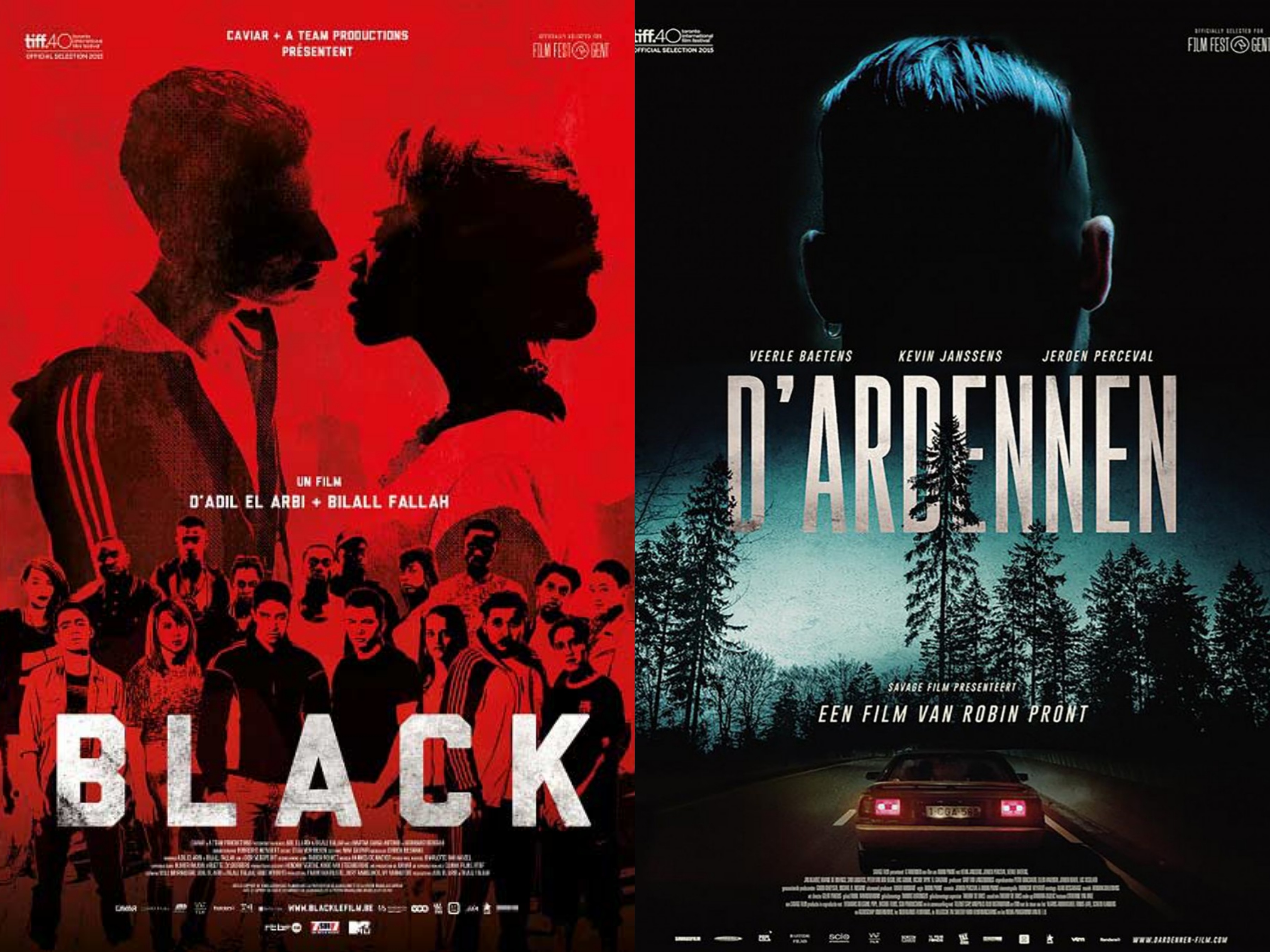
Robrecht Heyvaert is 28. He’s a Flemish DOP who has already made numerous short films that have been awarded such as Injury Times (2010) by Robin Pront, Broeders (2011) by Adil El Arbi and Bilall Fallah, Baghdad Messi (2012) by Sahim Omar Kalifa or De Vijver (2014) by Jeroen Dumoulein. In spite of his youth, he has also photographed three full-length successful films : Image (2014) and Black (2015) by Adil El Arbi and Bilall Fallah, and D’Ardennen (2015) by Robin Pront. At present, he is currently shooting Dode Hoek by Nabil Ben Yadir, while Say something funny by Nic Balthazar is in post-production.
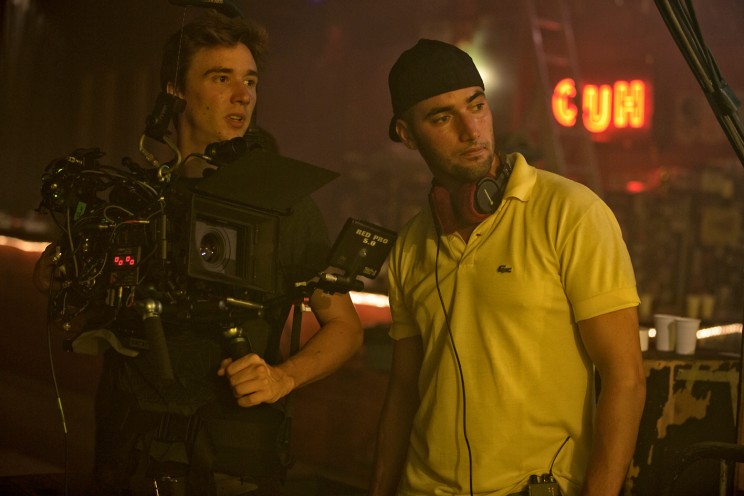 Black DoP Robrecht Heyvaert and director Bilall Fallah ©Jo Voets
Black DoP Robrecht Heyvaert and director Bilall Fallah ©Jo Voets
Could you present yourself and your work in a few words ?
RH : I did the RITS, in Brussels, in audio-visual techniques (specialised in Image). At the same time I was working as a projectionist in art centres in Strombeek and Vilvoorde. It was still on 35mm which was very fun and it enabled me to see a lot of movies. In school, you learn about techniques and theories, but the most important thing is to see movies.
Afterwards, I worked on about fifteen short films : graduation films, but also young directors’ films with whom I evolved. I did two short films with Robin Pront : Injury Time (2010) and Plan B before I worked on his full-length ones. I met Adil El Arbi and Billal Fallah on a festival that presented one of Robin’s short films and they loved it. So they asked me to work on Broeders which won the audience award at the international festival of Leuven, and the VAF’s Wildcard, before shooting Image and Black.
In the meantime, I also did grip or electrician on other sets, but not very often.
The three full-length movies that you did Black, Image and D’Ardennen have a common theme : violence which induces a certain style. Was it unintentional or was it a deliberate choice on your part ?
RH : Our intention was to make three very different movies and I think we succeeded. But I admit that all three are violent. And even though I do not choose the subjects of the movies that I am about to do, when the topic is too mawkish or syrupy, it bothers me. This being said, I don’t enjoy only horror, action or gory pictures with floods of blood, but I prefer hard subjects. Regarding style, I beg to differ from you. There are various ways of shooting and conveying violence. For instance, on Black, the shots were very close and dynamic whereas on D’Ardennen the camera was very still and very far away from the action.
I feel that the directors that you work with are relatively young too and that the style you propose is quite innovative in the Belgian cinema, or even European cinema. You’re closer to what they do in the States.
RH : For us, that is nothing new since our references are Spike Lee, Scorsese, Oliver Stone, almost all movies from the 90s. It’s not really original, but here it becomes something else, because it changes from what we see every day. But I was surprised that it worked so well in the States.
How are you involved in the prep ?
RH : I did a lot of short films with a low budgets, and on them we did a lot of prep. For instance we had to spot the locations, and even though they were cheap and therefore had nothing special, we still had to find the right angle, which enabled me to progress. On full-length films, the budget is far more important, but not so colossal either, so you have to adjust your expectations, you cannot build too many sets, you must be content with what you have… In prep, I talk a lot with the directors, we see a lot of movies together, we also cut. Truth is, on these three movies, we never really ended up with a complete cutting, I mean with a list of shots that the director assistants liked so much. But we always had a lot of ideas that we tried on set : sometimes it worked, sometimes it didn’t.
What were your intentions for the image, your references on each of these films ?
RH : For Black our main reference was Cidade de Deus by Fernando Meirelles and Katia Lund (2002). We were also inspired by some old Spike Lee’s movies like Do the right thing (1989). We wanted the image to be warm and dynamic, but not too realistic, we also wanted it very brightly coloured. We didn’t want the actors to be caricatures in their acting, but the image had to be rather stylised.
For D’Ardennen, it was completely different. We wanted movements and cuts to be as few as possible. The number of shots is less than half the shots on Black. We wanted the image to be very distant. We had many references, but none in particular.
For Image, I don’t know if we fully managed to do what we intended. But it was a matter of budget. We wanted something realistic in the directing, the cutting and the colour grading. We didn’t want a very colourful image. It had to feel like Brussels during winter. Sometimes, a scene had the dynamics of a good Oliver Stone’s movie, but that was it. Since we were on a very low budget, we depended on what we could do not on what we might choose to do. Shooting was already something.
Why was the budget lower than Black‘s ?
RH : On Image, we were short of funds. With Broeders, we won an award from the VAF, 60 000 euros, I think, and with some tax shelter we managed to reach 100 or 200 000 euros. But it was little. It was a budget for a short film, and we did a full-length movie with it. Almost everyone on that film : grips, electricians, assistants, actors, including myself, all worked almost for free. And the material was borrowed from friends.
About the material, what cameras did you use on those films ?
RH : On Image, we used an Alexa with Zeiss Ultra Primes. On Black, I used a Red Epic with Leica Summicron lenses. I chose that camera because it was the lightest at that time. I did a lot of tests with it, because I was no fan, I find it too grainy. They say its optimal sensitivity is 800 ASA, but we shot everything at 320 because it was the only way to get beautiful blacks. On D’Ardennen we used the Alexa with Hawks C and anamorphic Angénieux lenses. The film I did afterwards, shot last summer, soon to be released and entitled Say something funny by Nic Balthazar, was shot with an Alexa Mini and Summicron. And the film that I am about to do Angle mort, directed by Nabil Ben Yadir, the director of La marche and Les Barons, I intended to use a mix of Alexa, Alexa Mini, Hawks C, Hawks V, Angénieux and Lomo lenses.
How about the lighting ? Do you have favourite sources ? Every project is different, I suppose ?
RH : Yes, of course every project is different. But I am mostly interested in colours. I love colours. It worked perfectly on Black. We filtered a lot, even windows, with rather warm tones. Most of the time, we used CTS, Straw, that kind of filters, but also yellow ones, like the 101. On D’Ardennen, we also used a lot of colours, but mostly cold ones, with some warm touches like red now and then. I love red.
Yes I noticed the character’s red jacket on D’Ardennen.
RH : Yes I love that thing, it produces a good contrast with the atmosphere of the movie. I wanted to avoid having a decontrasted and desatured image, even though I enjoy this effect otherwise. In this film, we wanted something dark, but in contrast with elements of the set or clothes like the red jacket or the red car. The set lamps had to form coloured spots, sometimes very blue, sometimes very red. I like practical lights, wall lamps that are already in the image, they are always more realistic and it enables us to work faster in every direction. For instance, it was very useful on Black, because we had a very mobile camera, often low-angle shots so we couldn’t have technical ceiling. We had to set lights in the decor. For each scene, we chose two different contrasting colours, and we constantly switched for one to the other.
And on Image, I suppose the lighting was more natural ?
RH : Yes indeed, it was much more natural. We had almost no lighting. We did all the movie with two kinoflos, a HMI, and some 2K. We played a lot on reflections…
Did you handle the framing yourself for each film ?
RH : At the RITS, we separated the framing and the lighting, but I was not so pleased with it. The problem with such a technique is that the cameraman does one thing and the DOP has to light the scene based on what the former does. If you want to work separately I think it’s better to do the opposite : the DOP is the leader and the cameraman follows. On Flemish sets, I feel like most of the time it’s the same person and it suits me. On Black, we often had a second or even a third camera, and of course then we had other cameramen. I always do the framing except when there is steadicam. I don’t know how to do it and I would rather let this part to the people that are good at it. It’s really a job on its own. The steadicammer on this three movies was Steven Van Volsem, he is wonderful.
By the way, did you use any specific grip equipment ? I have seen that you used a steadicam and Cinediving on D’Ardennen.
RH : Indeed the film starts underwater. Wim Michiels from Cinediving shot it. I am very happy with what he did. It worked so perfectly that they used it at the beginning of the trailer. Except that, D’Ardennen is mostly shot on dolly. For Black, it’s a mix : dolly, but also handled (that’s why we tested and chose the RED because at that time the Alexa Mini didn’t exist), steadicam and Easyrig shots.
How about your team. I see you have worked with the same gaffer Wim Swinnen on the three movies.
RH : Yes, and I am always very happy to work with him and with my key grip, Jeroen Verdonck.They did several short films with me and furthermore they agreed to do Image even though it was almost for free. We trained together and we continue to evolve together. It’s the same with Tom Mulder, my colourist. I am very happy with his work. I hope I will be able to do the next film with him. It’s not always easy, because production companies often think that I am young and inexperienced, and because they are also young, they feel that they are betting on us. The other problem is when we do coproduction with Walloon or Brussels, because we have to hire local residents. I don’t enjoy those political games but that’s how it is.
How about your camera assistants ? I have seen you have worked with Ruben Appeltans ?
RH : Yes, he did Black and D’Ardennen and I am very happy with him. He gets what I need fast. The three of them often have to install things that I asked for but that we don’t use in the end because I often change my mind. But they don’t hold it against me, which really helps. If on short notice, we decide to shoot on the opposite side, or to change the colours of all the lights or to reverse the camera, they always go for it. Finally, I also like the fact that they all really enjoy the movies. They’re not simply technicians that switch on lights or camera.
What is your involvement regarding the other departments : make up, costumes, sets ?
RH : Everything is obviously connected : makeup, design, settings, directing and lighting. It’s very important to gather before the shooting and to explain what will the atmosphere of the film and the colours be like. Often, they find it amusing because there is no time for this on series. Unlike commercials, which have way more time for this than full-length films.
I really like settings. If I wasn’t DOP I would like to be set designer.
What were the budgets on Black and D’Ardennen ? What was the part of the image on those budgets ?
RH : For Black, I think it was 1,2 million. And for D’Ardennen, perhaps 2,2 million. I don’t think the image had significant budgetary costs. We were rather cheap. We didn’t use big installations, nor very big sources and the team was rather small : two electricians, sometimes three, one or two grips, and the same in the camera department. It suits me to work that way. For me, lighting is more the work of the art director : having the right curtains, beside lamps or wall lamps. It’s not about a 18K that lights the set from the outside. Maybe, if we had a very large budget on Black, we would have done it, but we didn’t, so we handled it like this and it worked quite well.
How about the post-production, how do you work with Tom ?
RH : We work at ACE Image Factory. I am there almost all the time during the grading. We discuss a lot of the atmosphere and we understand each other easily. As soon as we have agreed on the atmosphere of a scene, I get out : I go for a walk or I go talk to the VFX (they are really close by which is very practical), and I leave him to set the links between the shots, because it’s his work and I can’t do it.
What do you think of the outcome of the three films ?
RH : I am very happy with the results of each one, but I am aware that it depends on the budget. For instance, for Image, I am satisfied with what we have done and how it has turned, but since I did the lighting I can’t help seeing the limitations of the film and imagining what we could have done with the budget of Black, which is ten times bigger. On Black and on D’Ardennen what I enjoy most is that they both have a real style in accordance with the directing. The image is really part and parcel of it. Sometimes, in movies, you see really beautiful shots that have nothing to do with the film and I think it’s a shame. I am very happy to work with Adil and Bilall and with Robin because we understand one another so well. I analyse what they want for a scene and I adapt the photography in regards or we do the reverse : we adapt what is written in the script regarding what pleases us most, but we do it together.
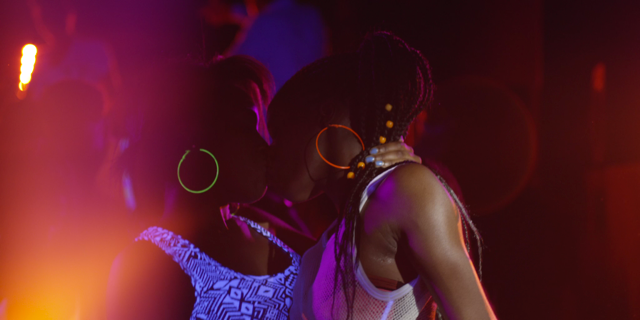
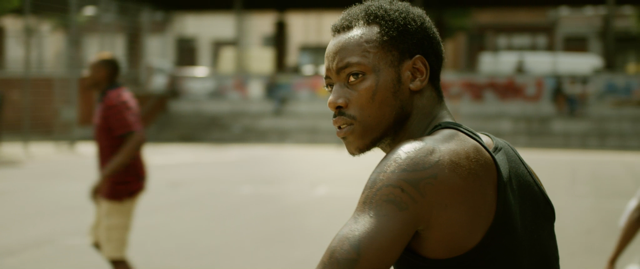
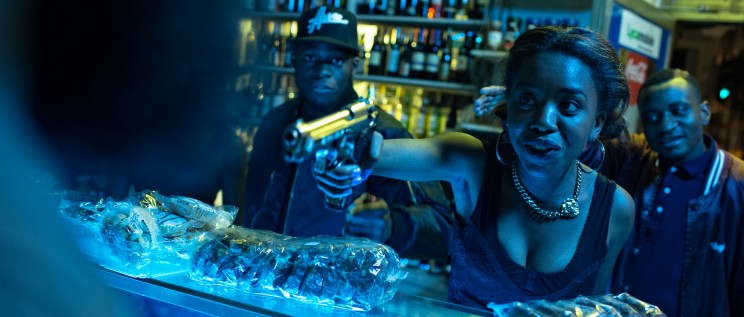 Black by Adil el Arbi and Bilall Fallah
Black by Adil el Arbi and Bilall Fallah


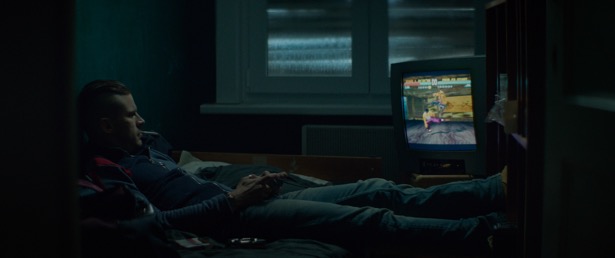 D’Ardennen by Robin Pront
D’Ardennen by Robin Pront
